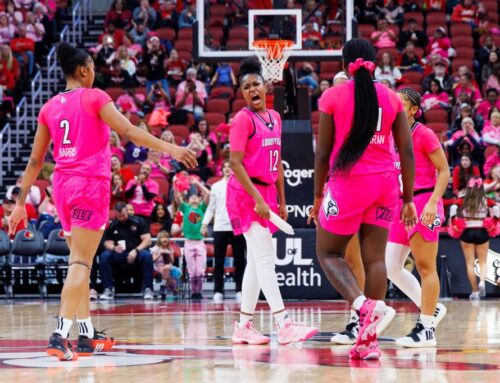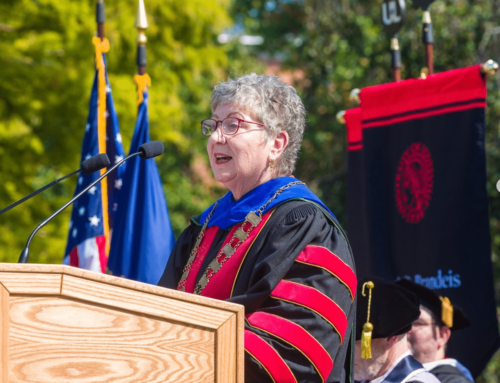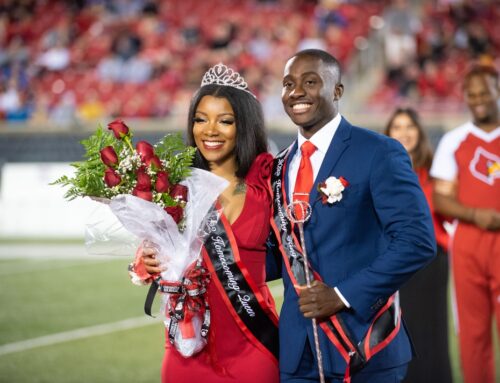A sudden flash of light tanned the faces of the awestruck thousands. The incredible ball of fire lasted only a moment before becoming a massive black cloud. A perfect ring of smoke billowed and rolled back upon itself in a disturbingly atomic fashion.
A million miles from Baghdad, this is what is known as Bonnaroo. In the midst of American chaos, pyro-artist Ken Smith drew all eyes to the blazing summer sky as his Smoke Ring Machine exploded high above the chaos of the summer festival. Intentional or not, the artwork seemed to promote the radical notion that explosives should be used for celebration rather than destruction.
Deep within the Bible Belt, a small town called Manchester, Tenn., has become home to North America’s hottest summer event. Since 2002, The Bonnaroo Music and Arts Festival has showcased an impressively diverse schedule of recording artists ranging from Beck to Bonnie Rait. Presently, event organizers are exhibiting a new interest in non-musical arts.
“Bonnaroo consistently attracts exceptional musicians,” said Russ Bennett, artistic director of the festival. “In the future we are hoping to attract a high level of artists from every medium.”
Bonnaroo organizers support an encompassing definition of art that includes just about everything, innovative cooking, camping and sun bathing not excluded.
For the three-day festival, 80,000-ticketed attendees camp in the grassy farmland that surrounds Bonnaroo’s seven music stages. Each camping area, or “pod” as they are called, is equipped with necessities such as toilets and food vendors. Among the tents are bars, clothing stores, glass shops and the occasional air-conditioned restaurant.
This year the “Art in the Pods program” employed students from Bowdin College to create site-specific installations for each of the camping areas. One student’s piece called “Cascade,” consisted of busted sinks and broken pipes. Its resemblance to an exploding bathroom was particularly appropriate at Bonnaroo where the base conditions of humanity are medieval but present.
In addition to heightening the visual intrigue of the festival, each of the student installations became a welcome landmark for navigating the sea of endless cars and tents.
The camping area was separated from the inner festival by an impenetrable wall and several security checkpoints. Before the guests arrived, the Bonnaroo staff adorned this wall with stenciled profiles of legendary rock stars. During the festival, unique and anonymous visions arose between the giant faces of John Lennon, Bootsy Collins and Prince.
Graffiti exploded this year at Bonnaroo, jumping off the walls and onto picnic tables, portable toilets and other event furnishings.
The familiar images of Andre the Giant and Laser Guided Democracy were juxtaposed with more obscure messages from the underworld, which often denounced Bush and his war. The spontaneous and clandestine art at Bonnaroo 2006 was raw, honest and satisfyingly disruptive to the official aesthetics of the event.
“Next year,” Bennett said in a telephone interview following the most recent festival, “we need to figure out a way to manage the graffiti – allow it without having it become destructive. Graffiti should stay on the walls; respect the things that are already in place.” It seems unlikely, however, that such lively expression can be restrained.
Inside the festival, the large music tents give the event a circus appeal. With the crowd came a carnival of hawkers, painted women and thieves. Costumed troupes were hired by Bennett to “plant the seeds” of performance. Dressed in “fire and golden feathers,” cabarets from New Orleans swerved through the masses, coronating concertgoers as performers through the ritualistic application of runic tattoos.
This year marked the first year Bonnaroo dedicated a portion of the festival grounds to visual artists. “The Art of Such ‘n’ Such,” a collaborative installation by fourteen pyro-technically oriented artists, was introduced at the festival by Burning Man celebrity Charlie Smith. The exhibition included the “‘Lil Mephisto Tesla Coil” by Syd Klinge, “The Storyteller Sculpture,” a fire-powered zoetrope by Jeff Morgan, and “Noma dix Productions,” a laser-light show by Rob Minnihan. The consistent use of materials – fire, metal and audience participation – united the diverse artists in a cohesive landscape of intense heat.
The general atmosphere of Bonnaroo has changed little since festival began in 2002. The giant bobble-headed sculptures were back; and so was the central mushroom fountain.
Still, Bonnaroo was officially rededicated as a “Music and Arts Festival” in 2005. This year, festival directors began diversifying the event with outdoor sculpture and site-specific installations. Nevertheless, art remains a sideshow at Bonnaroo.
Festival organizers have an opportunity to prove their dedication to contemporary aesthetics in 2007. Commissioned artwork, interactive sculpture and more exhibition-specific tents could make Bonnaroo a visual art destination.
As the festival continues to grow, expect the visual arts to become more than just a curious backdrop to the festival’s impressive musical lineup.






